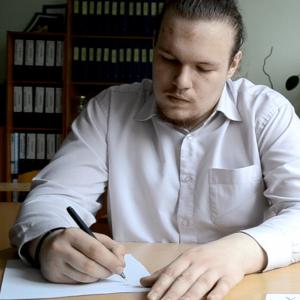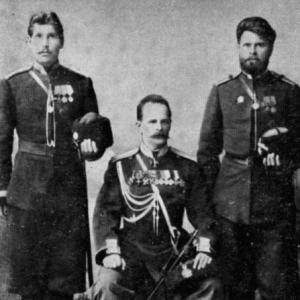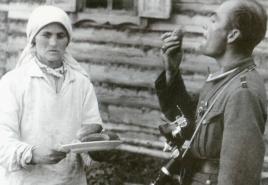Contour map of Buryatia. Buryatia map
One of the subjects of the Russian Federation is now the Republic of Buryatia. The administrative center is Ulan-Ude. The local population is 100,000. The border passes next to the Irkutsk region, Tyva, Mongolia, the Trans-Baikal Territory. It is located in Eastern Siberia, in its very center. A detailed map of Buryatia with roads and villages has preserved many accurate data about the past of this ecologically clean corner of the world.
Once upon a time, approximately before our era, the first state appeared on the territory of Siberia. It was called then Hun. Then it was owned by the Kyrgyz Kaganate. The strongest and largest tribes lived in the northern regions.
The Mongol Empire was founded by Genghis Khan, during his time it stretched from the Pacific Ocean to the Adriatic. Buryatia joined Russia only at the beginning of the 16th century. In the future, there were founded jails.
Much has changed over the years. Find accurate information on a detailed map of Buryatia, you will learn a lot of interesting things. The climate there is continental and sharp. In winter, very often there are frosts. Blizzards are sweeping. In summer, hot days are rare, precipitation is frequent. The economy is provided by mineral deposits. There are deposits of mineral raw materials.
Car roads
On the satellite map of Buryatia, three federal highways passing through the republic are clearly visible:
- - Tunkinsky tract (A333, former A164): Irkutsk region (Kultuk village) through Mondy (Buryatia) to the Mongolian border; beyond the Mondy border crossing, the route continues on the territory of the neighboring state;
- - Kyakhtinsky tract (A340, former A165): from Ulan-Ude to Kyakhta and further to the Mongolian border;
- - "Baikal" (federal P258, formerly M55): from Irkutsk to Chita through Ulan-Ude.
Looking at Buryatia on the map of Russia, one can see that the beginning of the Tunkinsky tract is associated with a branch of the federal highway "Baikal" (near the village of Kultuk). From "Baikal", which is a continuation of "Siberia", the Kyakhtinsky tract departs in the direction of Mongolia. Tunkinsky and Kyakhtinsky tracts are two of the four federal roads connecting the Russian Federation with Mongolia. There are also twelve regional roads: Mondy - Orlik (O3K-035), Ulan-Ude - Ulyunkhan, Romanovka - Bogdarin (P437), Mukhorshibir - Kyakhta, Shergino - Zarechye, Turuntaevo - Treskovo and a number of others.
Railway transport
Sections of two major railways pass through the republic: the Trans-Siberian and the Baikal-Amur. The Transsib goes from west to east along Lake Baikal, passes through the regional capital and has a branch in the direction of Mongolia from the Zaudinskaya station. BAM goes along the northern part of the subject, passing through the Severo-Muisky ridge along the 15-kilometer tunnel of the same name. All Buryat railways belong to the East Siberian railways.
Map of Buryatia with cities and villages
The map of Buryatia with the regions shows that there is only one large city in the republic - the capital Ulan-Ude. The population of the administrative center of the subject exceeds 400 thousand people. The rest of the cities are comparable in population and size to the township. The population of the largest of them does not even reach 25 thousand people (Gusinoozersk and Severobaikalsk).
Buryatia is a republic within the Russian Federation located in Eastern Siberia. The satellite map of Buryatia shows that the region borders on Mongolia, the Republic of Tuva, the Trans-Baikal Territories and the Irkutsk Region. The territory of the region is 351,554 square meters. km.
Buryatia is divided into 4 cities, 29 urban-type settlements, 614 rural settlements and 21 administrative districts. The largest cities in the region are Ulan-Ude (the capital), Severobaikalsk, Kyakhta, Gusinoozersk and Selenginsk.
The economy of Buryatia is based on metalworking, mechanical engineering, food, power and timber industries. There are 700 mineral deposits on the territory of Buryatia, of which 247 are gold deposits.
Lake Baikal in Buryatia
Brief history of Buryatia
In 1206, Temujin (Genghis Khan) united the Mongol tribes and created the Great Mongol Empire. In the 16th century, the empire collapsed. In 1703 Buryatia was annexed to Russia.
In 1918, the region was occupied by Japan, then the United States. In 1920, the region became part of the RSFSR. In 1921, the Buryat-Mongol Autonomous District was formed, which was transformed in 1923 into the Buryat-Mongolian SSR. In 1992, Buryatia became a sovereign republic within the Russian Federation.

Valley of volcanoes in the Eastern Sayan mountains in the Okidon valley in Buryatia
Sights of Buryatia
On a detailed map of Buryatia, you can see the main attraction of the region - Lake Baikal with the tourist and recreational zone "Baikal Harbor". It is recommended to visit the Baikalsky and Barguzinsky reserves, Tunkinsky and Zabaikalsky national parks.
In Buryatia, it is worth visiting the Museum of the History of Buryatia, the Ethnographic Museum of the Peoples of Transbaikalia, the Valley of Volcanoes, the Holy Trinity Selenginsky Monastery, as well as the largest cities of the region.
Tourist notes
Gulrypsh - a summer cottage for celebrities
There is an urban-type settlement Gulrypsh on the Black Sea coast of Abkhazia, the appearance of which is closely associated with the name of the Russian philanthropist Nikolai Nikolaevich Smetsky. In 1989, due to the illness of his wife, they needed to change the climate. Case decided the matter.Buryatia
The Republic of Buryatia, this republic is part of the Russian Federation, is also a subject of the Russian Federation, adheres to a democratic political direction. The Republic of Buryatia is also a part of the Siberian Federal District. The capital of this wonderful republic is a city. In this article, you will find all kinds of maps of Buryatia.
Interactive map from Yandex.Maps:
- !!! Dear readers, there is a main article on my blog, where you will find not only maps of all the subjects of the Russian Federation, but also maps of rivers, lakes, cities and much more.
Below you can see what the map looks like in JPG format, so it can be printed and hung on the wall.
Below you will find the physical map of Buryatia also in JPG format, as well as the administrative map of Buryatia.

The Republic of Buryatia is part of the Russian Federation as a subject and is a democratic legal state formation, according to the republican Constitution. The capital is Ulan-Ude. More than 973 thousand people live in Buryatia.
Opening map of the Republic of Buryatia, you can see its borders with Tyva, Irkutsk region, Transbaikalia, as well as Mongolia (Russian borders).
It is believed that the first state on the territory of modern Buryatia was the state of the Dinlins (the people of China), this was a period of about the 4th century BC. In the course of history, Buryatia passed into the power of the Xiongnu (who later became the Huns), the Mongolian Syanbi, the Zhuzhan Kaganate, and the Yenisei Kirghiz. From about the middle of the 17th century, Buryatia was mastered by the Russians, and in 1703 it voluntarily became part of the Russian kingdom.
FROM the map of the Republic of Buryatia you can see various objects modern and remaining as historical memory. The geographic location of the republic is the center of Asia, the territory of the East of Siberia. The territory of Buryatia is significant, in its elongated shape it resembles a crescent, as a result of which the economy of the republic is determined by various conditions of economic activity.
Buryatia is rich in minerals, including gold, tungsten, uranium, lead, etc. Gold mining is one of the main items of the republic's budget replenishment. Coal and non-ferrous metals are mined in Buryatia in significant quantities. The richness of local nature is preserved in various oases, the largest reserves and national parks: Barguzinsky, Baikalsky, Dzherginsky, Zabaikalsky ...
The population of the republic is represented by Russians, Tatars, Buryats, Ukrainians, Evenks. The economy of Buryatia belongs to the industrial-agrarian type. Gross income per capita equates to Serbia, South Africa and Iran.
Settlements with a population of over 5 thousand
according to 2010 census
| Ulan-Ude | ▲ 404.4 | Ivolginsk | 7,0 (2003) |
| Severobaikalsk | ▼ 24.9 | Falcon | 6,7 (2009) |
| Gusinoozyorsk | ▲ 24.6 | Kizhinga | 6,6 (2003) |
| Kyakhta | ▲ 20.0 | Turuntaevo | 6,4 (2003) |
| Selenginsk | ▼ 14.5 | Kabansk | 6,4 (2003) |
| Zarechny | 11,8 (2009) | Barguzin | 6,0 (2005) |
| Zakamensk | ▼ 11.5 | Kurumkan | 6,0 (2003) |
| Onokhoi | ▲ 10.7 | Sosnovo-Ozerskoe | 5,9 (2003) |
| Bichura | 9,7 (2003) | Zaigraevo | ▲ 5.6 |
| Taksimo | ▼ 9.6 | Mukhorshibir | 5,5 (2003) |
| Khorinsk | 8,1 (2003) | Jida | 5,4 |
| Petropavlovka | 7,7 (2003) | Vydrino | 5,3 (2003) |
| Kamensk | ▼ 7.2 | Novoilinsk | 5,1 (2003) |
| Ust-Barguzin | ▲ 7.2 | Nizhneangarsk | ▼ 5.0 |
Administrative regions
| № | Municipal district of Buryatia | Administrative center |
|---|---|---|
| 1 | Barguzinsky district | village Barguzin |
| 2 | Bauntovsky district | village Bagdarin |
| 3 | Bichursky district | village Bichura |
| 4 | Dzhida district | the village of Petropavlovka |
| 5 | Yeravninsky district | the village of Sosnovo-Ozerskoe |
| 6 | Zaigraevsky district | zaigraevo village |
| 7 | Zakamensk district | zakamensk city |
| 8 | Ivolginsky district | the village of Ivolginsk |
| 9 | Kabansky district | village Kabansk |
| 10 | Kizhinginsky district | the village of Kizhinga |
| 11 | Kurumkansky district | village Kurumkan |
| 12 | Kyakhtinsky district | kyakhta city |
| 13 | Muisky district | taksimo village |
| 14 | Mukhorshibirsky district | village Mukhorshibir |
| 15 | Okinsky district | orlik village |
| 16 | Pribaikalsky district | the village of Turuntaevo |
| 17 | Severo-Baikalsky District | settlement Nizhneangarsk |
| 18 | Selenginsky district | the city of Gusinoozyorsk |
| 19 | Tarbagatai district | village Tarbagatai |
| 20 | Tunkinsky district | kyren village |
| 21 | Khorinsky district | the village of Khorinsk |







